by Tom Gaylord
Writing as B.B. Pelletier
Today’s report is your first look at the new Air Venturi air shotgun by Sam Yang. This is a guest blog about the new Air Venturi Wing Shot air shotgun, written by Pyramyd Air’s Derek Goins.
If you’d like to write a guest post for this blog, please email me. Over to you, Derek.
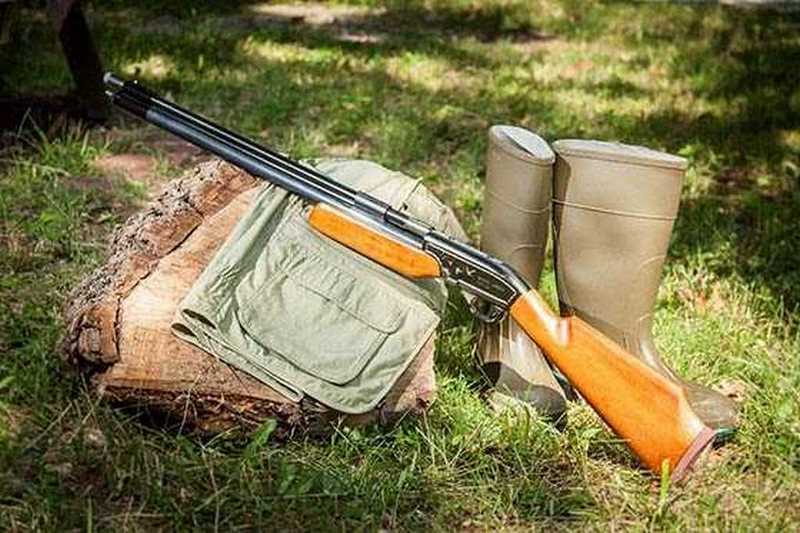
The brand new Air Venturi Wing Shot – the first .50 caliber smoothbore air shotgun.
This report covers:
- Wing Shot Overview
- Shot Shell Design
- Patterns
- Lethality
- More Than Meets the Eye
- Nits and Picks
- Simple & Utilitarian
- Check Before You Shoot
Introduction
In modern airgunning we don’t see many guns that surprise us anymore. There are rifles capable of hole in hole accuracy or killing animals as large as deer. However, very rarely, a gun is born that can fill multiple roles. Combining utility, simplicity, and ultimate versatility is a tough task for any manufacturer. But it’s not an air rifle I speak of, but instead a gun that airgunners have not seen in years; perhaps not at all! I am excited and humbled to bring you the new Air Venturi Wing Shot air shotgun!
Description
The Wing Shot is a sleek gun coming in at 43 inches from muzzle to butt, with a barrel length of 22 inches The Sam Yang big bores (and this gun is produced for Air Venturi by Sam Yang), in general, have a look that grows on you; the Wing Shot breaks the ugly duckling mold with a very pointable gun that handles well. It’s fairly lean coming in at 7.3 lbs. and it swings like a shotgun should. Bearing down the front brass bead is swift and natural. The length of pull is 13.5” allowing it to be comfortably used by even smaller shooters. The shotgun bears the same familiar knurled sleeve covered loading port and generously sized cocking handle. The hardwood on the gun appears to be the same as the Sam Yang’s’ other air guns which is strong and well finished. The forearm and pistol grip are graced with grippy checkering.
A feature that I’m very happy to see is the factory fitted male Foster quick connect fitting as the standard filling method. I don’t know about y’all, but the less time I have to spend scrambling around for filling probes the better! The fill nipple comes standard with a snap-on cover to keep crud out. The gun fills to a standard working pressure of 200 BAR and has easily readable manometer to monitor your remaining pressure. A high-pressure SCBA or SCUBA tank is recommended for this compressed air gun, though you can use a hand pump in a pinch.
The factory installed male Foster quick connect fitting is a nice touch.
Shot Shell Design
The Wing Shot shotshell design is quite unique in that it uses a frangible plastic shell to house its shot. The assembled shell is 0.75-inches long and holds around 110 grains of #6 shot, with the loading port being measured at just under an inch. The round nose of the shell is scored with an X to help the shell break apart. I think they look rather like shot pills than shotshells, but my mind is away with me again. The idea is that when these pills are fired out of the barrel they’ll hit a certain speed or distance at which the nose would fragment away. After this the remaining plastic base is acting like a conventional shot shell wad carrying the shot a bit further. I imagine this was a maddening project to engineer as some shell designs might be rocketing plastic slugs, while others may break apart too early.
The shot shells as seen empty (left image) and compared to a .50 cal slug (right image).
The shells I had were already assembled, but I did have the ability to assemble shells myself. From what I’m told both pre-filled shells and empty hulls will be available to the end user. The customer will have an option of choosing between #6 and #8 shot sizes. Typically the smaller the shot size the more you can stuff in a shell, since this puts more shot on target it’s perfect for shooting animals on the move or flying. On the other hand larger shot size is more lethal on slower or stationary targets like squirrels because each piece carries more energy. I filled the shells with my ultra precision Bic pen cap scoop, which consistently gave me loads of 110-112 grains of #6 shot. Once the hull is filled then you simply push in the plastic base. One side of the base is beveled to cup the lead while the bottom end is flat.
Let the Fun Begin!
Loading the Wing Shot is a simple affair. The knurled breech cover is sealed by two O-rings that provide a bit of tension. Slide the cover towards the muzzle to expose the chamber. Pop the shell in the chamber and pull the cover closed. I also nudged my shells forward into the chamber a bit. When I handle these guns I like to lightly oil those breech seals with plain air tool oil. It keeps them from drying out and ripping, which can be a headache to replace.
To fire the Wing Shot you must first put the safety on “fire” to allow cocking. It may be of some interest that this gun has two power levels. When the shotgun cocking handle is pulled back you will hit a locking point about ¾ through the pull, which is low power. Pulling the handle back a bit more will set it for full power. The power levels simply have to do with how hard the hammer hits the firing valve. The low power setting is about 150-200 FPS off full power velocity.
The end user can expect 5 viable hunting shots, with the first 3 having the most oomph. In my tests the 110 grain shot charge launched at 1,130 FPS, with the 5th shot ending at 1028 FPS. If you surpass the 5 shot mark the gun will quickly start to drop velocity. On low power it would be reasonable to expect around 8 great shots.
Patterns Upon Patterns!
For a shotgun to pattern successfully quite a few variables have to fall in place. If the pattern is too wide the BBs lose lethality; too tight and you’ll have a tougher time hitting moving targets. Fortunately the Wing Shot is fitted with a removable choke that utilizes the barrel thread for attachment. I don’t know at this time if there will be additional chokes available but the standard choke was perfect for up to 25 yards. At 15 yards the pattern is around 9;” at 10 yards it reduced to 6”. I also experimented with some low power patterning to see if a more gentle air blast would hold a tighter pattern, but found that the pattern size stayed the same with the point of impact dropping slightly at 15 yards, compared to full power.
Shot groupings above: 10 yards at full power (left image); 15 yards at full power (center image); 15 yards at lower power (right image).
Lethality
All results the on paper were great, but it’s a shotgun and I really wanted to stretch her legs. The lethality of the gun was one of my biggest concerns, and I threw all I had at it. Fresh fruit, cardboard, rolling pellet tins, airborne pellet tins and ballistic putty were all blasted in the name of science and research. What I have found is that the Wing Shot is perfectly lethal up to 20-25 yards for most pest bird species, after that the pattern opens up too much to be humane. Within this recommended range, the gun performs beautifully and sent all my targets flying in a most impressive way. The penetration of the lead shot made a believer out of me. The shotgun didn’t have any problem with shredding thin steel cans or making fruit salad I truly appreciated how easily and naturally the shotgun swung from targets, you can immediately tell that it’s not a refitted big bore, but a purpose-designed gun. It should be noted that wing shooting animals will require some adjusted lead times in comparison to powder burning shotguns. I look forward to a time that I can take this gun out for an actual field test.
More than Meets the Eye
In this age of airgunning we want more for our money and the Wing Shot delivers with pure utility. The shotgun’s .50 caliber smoothbore barrel can also utilize cast or swaged lead slugs, turning the starling-slayer into a short range medium-game gun. I will emphasize that the barrel does NOT have rifling so we will not see the same accuracy that we would from a rifle. I admit that I was hopeful, at best, that the slugs would group well. At 25 yards I knelt behind the bench and aligned the bead with the target and fired three 336-grain flat nose .50 caliber bullets, which to my surprise produced in a tidy 2” group. The power is well on point with 185 grain round nose producing 800 FPS for the first shot. Shot 5 finished at 685 FPS. If you have never fired a big bore air gun the recoil tends to increase as your bullet weight does due to backpressure, though even with the fat 336-grainers the recoil is a gentle push. I tried groups at 40 yards as well and produced reasonable results. It should be noted, however, that the impacts of slugs do not correlate well to the brass bead sight. If you plan to shoot slugs often I would recommend an optic, but the bead works beautifully for shot shells. The Wing Shot does not come with a dovetail, though looking closely at the gun it appears that the standard Sam Yang rifle rail can be affixed with two receiver screws.
Even at 25 and 40 yards, my shot groupings were reasonable with .50 caliber slugs.
With responsible and ethical shot placement this gun will be capable of taking coyotes and deer at short ranges, you will just need to have realistic range expectations when using bullets. I also tried .50 caliber round balls with dismal accuracy results. While round balls can be cheap to shoot, the design of the projectile is rather poor. The ball does not seal well in the barrel, allowing usable air to blow by — effectively wasting it. There is also the fact that the design loses velocity rather quickly because of a low ballistic coefficient. Stick with cast bullets and I guarantee you will achieve better accuracy and terminal ballistics.
Nits and Picks
No gun is perfect, and I feel obligated to share two gripes that I had with the Wing Shot. First, I would love to see a second brass bead closer to the breech. This would allow for a more consistent sight alignment, which I’d find useful for a gun that doesn’t utilize a ton of shot. My only other gripe is that I wish the loading port was milled longer so the user could utilize longer and more potent shotshells. Perhaps in the future we’ll see a Wing Shot Magnum with 2” shells! Though the shotgun performs admirably, these are two things worth mentioning.
Simple and Utilitarian
I can say with utmost certainty that the Wing Shot will be perfect for those folks that like to tinker and experiment with different shot loads and slug weights. I found myself running around happily testing one thing or another. The gun is simply a hoot to shoot, it’s a certain kind of fun that most of us have forgotten in our pursuit for accuracy and power. There are a few guns out there that still make you smile when you shoot them; often they are guns that we started the sport with. The everlasting Benjamin 392/397, a well kept FWB 124, for me personally; a RWS 94 that cemented a love for air guns and hunting within me. The Wing Shot makes me grin ear to ear when targets dance under shotshell persuasion and the simplicity of its design is delightful. The Wing Shot delivers everything it promises as a shotgun, and performs equally well within reasonable ranges as a slug gun. It fills the utility niche, which has been screaming for a flagship, like no other gun before it.
Check Before You Shoot
On a closing note it is important to mention that since this is the first production air shotgun, hunting legislation may not be written for it yet. While I can easily recommend this gun for wing shooting pest birds and taking medium-game with slugs, it is your responsibility to check local game laws before squeezing the trigger. I generally like to call the Game Warden (Wildlife Officer depending on state) to get the current information on game laws. Game Wardens are more than happy to help and appreciate a hunter taking the responsible route and checking first. They will often turn you onto some great hunting spots.
I thoroughly enjoyed my time with the Air Venturi Wing Shot and it’s left an impression of quality and utility that I can stand behind. I am absolutely thrilled for the future of this gun. Perhaps, dear readers, we can convince the powers that be to send this old boy on a pest bird shotgun hunt! Stay safe and happy shooting.
Semper Fidelis,
Derek Goins
Editor’s note: See Jim Champan’s American Airgunner video on this special air shotgun!

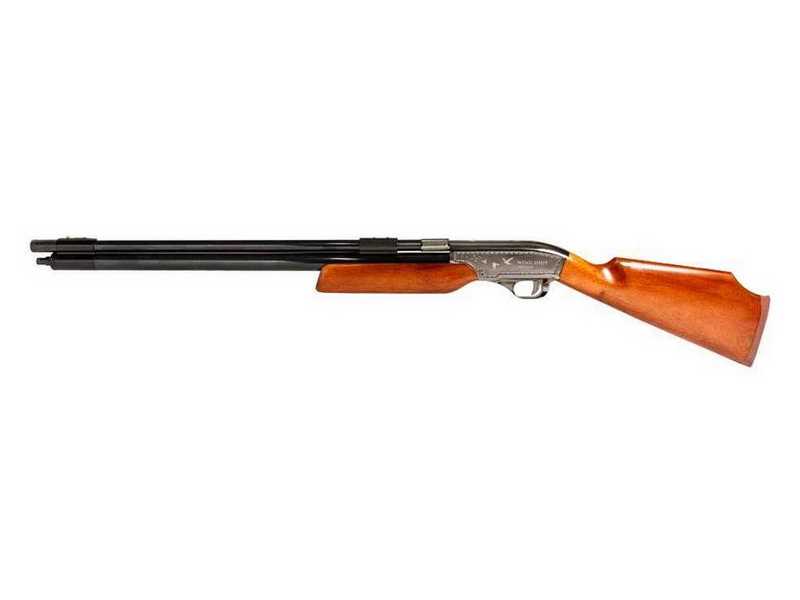
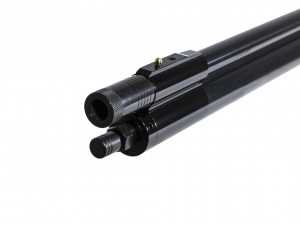
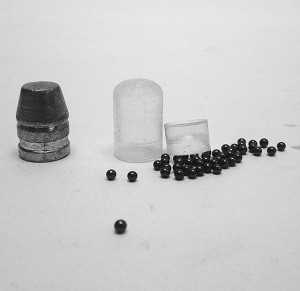
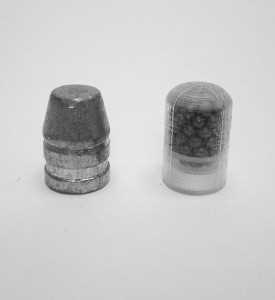
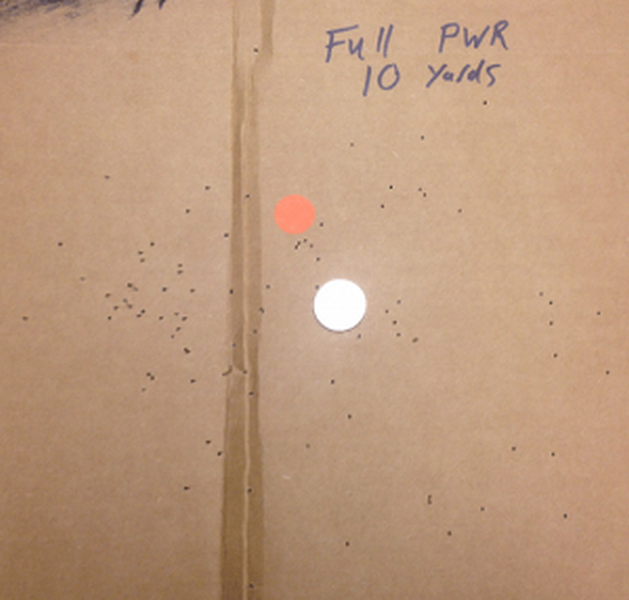
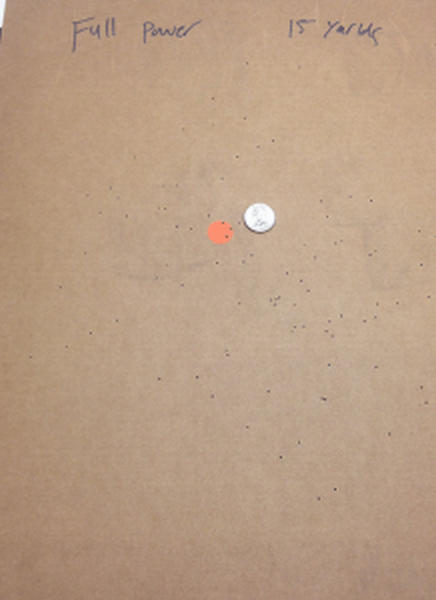
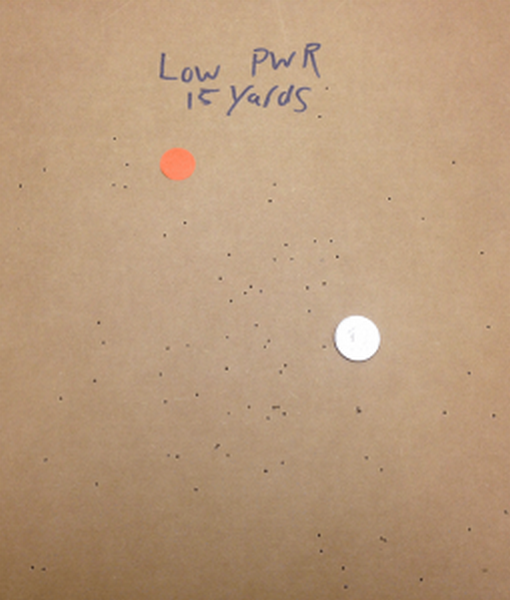
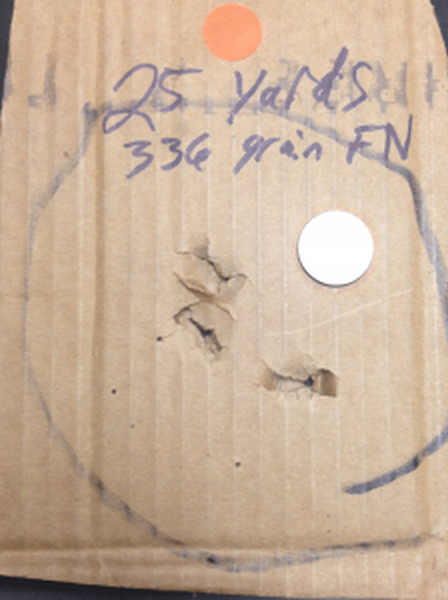
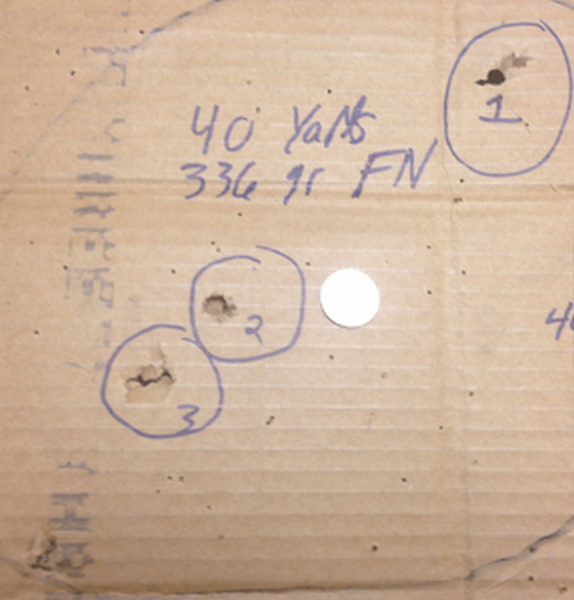
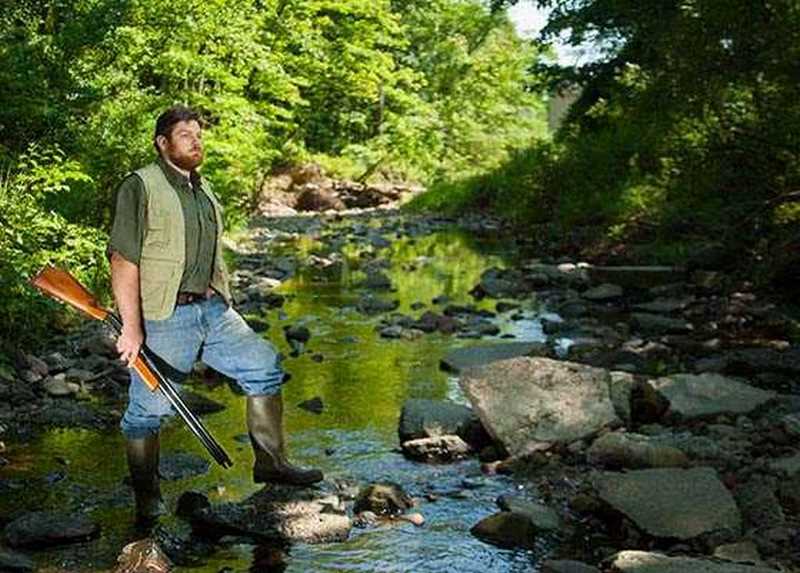
Derek! Semper Fidelis! Been waiting for another one of these for over 30 years!! And maybe this one (Wing shot) will work! Seems you’ve done your home work on shotguns and shot air guns! Wing Shot? Semper fi!
J.Lee,
Thanks! I was pretty surprised myself when we learned about it. I was a bit doubtful at first, but I’m certainly impressed with the performance so far.
I like it! As a matter of fact I clicked the picture so I could see more and get an idea of a price, I hope they keep it in line with other big bores of the same lineage.
When should this gun be listed and if different when should it be in stock?
Reb,
There should be a listing next week and the price will be okay.
B.B.
Thanks B.B!
Ok, I know and admit from the start that I’m treading on ground that is unknown to me (pcp guns)…but here goes my question anyway.
This truly does look like a fantastic gun (shotgun) as it’s made. But is there a chance that at some point in the not-to-far furure someone may make a break-barrel spring version of an air-shotgun?p
A VERY large number of powder-burning break-open shotguns do and have existed for centuries, so the break-open is not alien to design. Also, the break-barrel spring design certainly is not new to airguns. Just thinking that with the more recent advances in materials, design improvents, and the resulting increases in available power in springers these days that there might be a practical and econimic way to “marry” it all together for a production break-barrel air-shotgun brother for the Wing Shot.
Just a thought (with NO practical knowledge/experience on my part)…more of a “Could ya’ if ya’ wanna’ ” kind of thing.
Denny.
P.S. ..for hunting, would the lead-shot versus steel-shot be an issue like it is for powder-burning shotguns as well? (<—finally, a truly sensible question from me…knew I had one around here somewhere). 😉
U kbow tgat PA lists a pair of Gamo offerings, both in .22, delivering muzzle velocities in the lower 720’s with no.9 shot (meang light-weightshot + moderate velocity = lower fps at the muzzle and all subsequent distannce the are currently given by Sam Yang’s Wing Shot.
So I guess I should be asking “…can it be done to produce a Practical and Useful break-barrel air-shotgun?”, vs. asking if one could be made, as they already have been.
Just thinking along linesthe power and range of the Air Venturi…large cal & ga. with the higher vel. like the Air Venturi.
Denny.
Denny,
You just answered your own question. The Gamo Viper is doing practically all that a spring piston can with shot. The Wing Shot is orders of magnitude more powerful.
B.B.
Could a more powerful springer not be used than the Viper? RWS 460, Welbey Patriot or some other more powerful springer (or gas spring) for example. Maybe in 25 cal?
Doc,
The gains are small. Read this article to see what I mean:
/blog/2008/10/steel-dreams-part-2-building-a-more-powerful-spring-piston-gun/
Even a 30 foot-pound springer would be just a peashooter with 1/4 ounce of shot.
B.B.
B.b.
I’ve read it a couple times. I think I afree with the commenter in 2008. That in making a giant springer it seems like it would be better to chase fpe rather than fps.
Like a bullpup with a really long powerplant shooting .30 HBWC’s. I’m not saying it would be easy or pleasant to shoot, but just that it might work.
Sorry, agree.
Famous tried with their Viper Express but it couldn’t propel enough shot at a high enough velocity to be effective on much more than aluminum cans and very small pests at close range. If the spring tube housing were moved into the buttstock(someone’s already done this and I’m sure a patent is still pending) it would provide much more space for the powerplant but who’s gonna cock it?
Who’s Famous?
That was supposed to be
Gamo.
‘Morning folks,
Hey, sorry about all of the typo’s and ill-formed thought process in my above comments. (Yesterday was a treatment day and 8 hours of getting a few pretty toxic chemicals pumped into my body leaves me kind of ‘fuzzy-brained’ for a day or 2.).
Again, my apologies to those who suffered through my wandering gibberish.
Denny.
P.S.—the comment below about Derek’s writing and great report is true and accurate. THAT comment I DID get right 🙂
Denny,
Lots of questions.
First I doubt you will ever see a breakbarrel spring piston air shotgun because the powerplant simply doesn’t have what it takes to push the shot.
Don’t confuse a break-open shotgun action with a breakbarrel pellet gun. The former is simply the way to load the gun. The latter is how the power is generated..
Lead shot versus steel shot is years in the future for air shotguns. The Wing Shot may be the very first practical air shotgun ever made. There is a long way to go before they start to have an impact of migrating waterfowl.
B.B.
B.B.,
“….doesn’t have have what it takes to push the shot…”.
Understood. A bit more thought on my part last night would’ve made me realize that. 😉
“Break open-loading versus break barrel cocking/charhing…”
No confusion, and quite true. .Sorry I didn’t write clearly enough to explain myself better. 😉
As for the lead vs steel, just curiousity on my part…we all know how rediculous and extreme that the anti’s and the epa can (and often do) get these days with the back-door attempts and any form of control/limitation that they can think of. Good to know that they haven’t yet gotten to us for the most part.
Anyway, the points written in this reply to you are EXACTLY the reason that I literally felt obligated to make the apology that I posted earlier this morning. :'(
Thank you, and again, my sincere apologies to the readers (AND the host). I think it might be better to have my wife read my comments on that day or 2 BEFORE I hit the button to post a comment, lol. 😉
Denny.
Denny,
No need to apologize. We understand your situation.
B.B.
Derek,
Excellent piece of writing. Thanks for a job VERY well done.
Denny.
Thanks Denny, I certainly appreciate the feed back.
Found a good hold for the QB-88, the elevation thumbscrew is missing and loading must be done carefully so as not to disturb windage but that was a decent 5 shot group from a cheap Chinese spring-gun found in a trashcan.
This thing actually has a knee riser boss in it’s forearm which shoulda clued me in but I started just in front of the trigger guard, it’s buzzy and stinks of cooking oil when reloading but it’s a welcome addition to my family of airguns. 🙂
Congratulations on a very well-written article with well thought out testing procedures! I have always wondered about the effectiveness of an air scattergun that holds a meaningful amount of shot, but you’ve answered that question thoroughly in this report.
I was talking with a friend today about his desire to effectively defend his bird feeder. He has a Sheridan Silver Streak that I am going to rebuild and throw a set of intermounts and a scope on that should nicely fill the task, but he was inquiring about trying out one of my springers. I explained that he would have to learn to perfect the artillery hold to have acceptable accuracy with any of my magnum springers. I’m going to work with him on the technique, but he sounded a bit discouraged that his firearms experience will only be part of the equation in accurate airgun shooting. This led me to an honest question: Does every airgunner that wants accuracy and power either have to learn to shoot a springer well, or spend a truckload of money to drag around a bunch of pcp gear? The simple answer is that a good-quality multi-stroke pneumatic is what a large number of airgunners really want, but they are lured into cheap break-barrels (that are hard to shoot well) by looking at velocity numbers and comparing the feel of the springers to that of the toy-like multi-pump pneumatics.
In my experience (which often differs with B.B’s) the Crosman 2100 will hardly keep a 3″ group at 20 yards, the Daisy 901 will do about equally poorly, and the Daisy 880 is consistently around 1.5-2″ at 20 yards. I’m not sure why my 880’s are consistently better guns than the 901’s given they are almost identical, but that’s the way it shakes out. I have owned several of each of these rifles, and even accurized a few as well, but find that the out-of-the-box accuracy is consistent with the results I listed. They simply do not cut it in the accuracy department once price per accuracy is removed from the equation, and generally feel cheap and plasticy. While the 2100 feels to be manufactured to the highest quality of the pumpers, it is the hardest to pump, shoots slightly slower than the Daisys , and is normally the least accurate of the three. Not to mention its maddeningly inconvenient loading port and cocking handle. My Crosman m4-177 is about as accurate as my Daisy 880s are, but doesn’t have the power that one needs for hunting (or shooting past 25 yards in even a slight breeze). All of these rifles also have awful triggers. Though they can be made to have amazing triggers very easily for free if you have some mechanical skills, not everyone wants to tear open a new gun to make it acceptable. The Benjamins seem to be the frontrunners, though they are a bit heavy to pump for many shooters, don’t have the best triggers, and require the cheezy crosman intermounts to allow a scope to be mounted. They also do not have a cheekrest that works for the high scope position that is created by the intermounts. So, as a fan of all things airgun, I regularly peruse the Pyramydair website looking for anything new in multi-pump pneumatics. Lo and behold I see Gamo is offering two new models of this type of powerplant. the M4TAC and the Bone Collector MP. They both offer competetive fps ratings, and Gamo traditionally seems to have a high performance to cost ratio, as well as very nice synthetic stocks for their price range. Could these be the higher-grade multi-pump pneumatics that I believe the market is screaming for? So my real question is this:
Would you, or B.B., or anyone who already owns one of these rifles be willing to do an in-depth review to shed some light on these new offerings from Gamo? I think it’s high time for multi-pump pneumatic build quality to catch up with break-barrel rifles, and offer a truly hunting and target shooting capable multi-pump pneumatic. I’m certain that Daisy and Crosman can get the job done if they target a rifle with an asking price of $150-200, but has Gamo beat them to the punch?
Send me one and I’d gladly spill all the beans 😉
Thanks for the great reviews guys. As always, I can’t wait to see what you’ll report on next!
I think Webley came the closest with their rebel multi pump. If they would have made it with a pump asist, it would have been about perfect. Unfortunately, a lot were returned with bad seals and Pyramid has dropped it from their inventory. I have a m4 177 and have shot it with pretty good results out to 35 -40 yards with CPHP 7.9 grains. My Leapers 6 by 24 scope fits on the Weaver rails pretty nicely. I think the basic frame of the gun is strong enough to work if they would up the power plant (use a discovery or marauder valve) and improve the trigger. That way they wouldn’t have to do tooling for a completely new gun. I don’t think it’s going to happen, though, because people don’t see a multi-pump as a serious air gun as we did in the sixties. I’m holding out for a 12 foot pound Nitro Piston in 177 with a good trigger.
Brent,
May I suggest one of the Diana 34 clones as your .77 Springer? I’m still shooting my .22 Impact as it came outta the box and the T06 trigger is awesome.
Only thing is you may have to go with a UK version to get the power down to 12fpe because it sounds like the .177’s are still running 15-18fpe or better.
I also liked the Rebel but hard pumping and lack of an integrated scope rail reminded me too much of my 392
Brent, I remember giving the webley a good hard look. It had a lot of what I was looking for, but also a lot that eventually steered me away from buying one. It seemed that quality control was severely lacking, and it left a lot to be desired in user friendliness. As far as a .177 with a 12 ft/lb nitro piston, I’m with you. I have several np guns in .177 but they all use the pretty poor Crosman/Gamo design. It can be pretty easily tweaked for a decent trigger pull, but I know that most shooters don’t want to have to do a trigger job to get a good-shooting rifle. Also, mine all easily break 900 fps with crosman premier lights, putting them closer to 15 ft/lbs than 12. I expect that a 12 ft/lb nitro piston gun would be very smooth and low on recoil. Unfortunately novice airgun buyers would probably look right past an 800 fps gun when on the shelf next to a 1000 fps version, and manufacturers know it. I can say that for a very cheap gun, I am very pleased with my Crosman Vantage nitro piston rifle. It shoots premier lights at 930-950 fps with 1.5″ groups at 30 meters using the somewhat crude open sights. I’m sue I could do much better with a scope, but it appears to have enough droop to need a dropper mount, and I bought it to shoot with open sights. I just added a longer trigger adjustment screw and adjusted it for a short, but safe, sear engagement, and I find the trigger enjoyable if not excellent considering it is a sub-$100 gun. I will keep my fingers crossed for a true 700-800 fps gas ram gun though. I know it will be a pleasure to shoot.
P.S. Brent, I think the m4-177 is a winner too. The only optic I have tried on mine is a 3x prismatic meant for an AR (with a 100 yard parallax setting), and my groups run anywhere from 3/4″-1.25″ at 25 yards for 10 shots with crosman premier lights or hp’s. A little bit more robust design with more power would be a home run. I do prefer Daisy’s pump design to Crosman’s though. More power for less work.
Brent –
“I’m holding out for a 12 foot-pound Nitro Piston in 177 with a good trigger.” To me, also, that sounds like it should be a really nice rifle to shoot, as long you don’t need hunting power.
I had read that the gas piston in Hatsan guns has a port for adjusting the pressure, I emailed PA and they said: “I have heard something about this. However, we have no information on how this is performed. You would need to contact http://www.hatsanusa.com to get the best details on this procedure.- Dan”
so I emailed Hatsan USA and: “It is possible to reduce the air pressure in the Vortex piston. However, for liability purposes, we cannot provide any instructions on how to do so. We also cannot change the pressure at our service center. We can tell you, there is information available on the internet on how to do so.”
But I’ve done a fair bit of searching and not found anything. Any of you blog readers have any input? Methods, equipment needed, etc…
TIA – Gerhard
It is possible to reduce the air pressure in the Vortex piston. However, for liability purposes, we cannot provide any instructions on how to do so. We also cannot change the pressure at our service center. We can tell you, there is information available on the internet on how to do so.
Gerhard_k,
Here is the problem, LAWSUITS!
Can you name ANY other country on the planet that rewards STUPID people for being STUPID by equally STUPID JURIES, I cannot! Only in America, is this a great country or what?
If Hatsan would supply you with instructions to change the factory pressure on the Vortex piston, they could be held liable in a court of law, If you hurt your self or others while attempting to change the factory pressure! At that point, they have given you the “KEY” to adjust the pressure of the gas ram below OR above the SAFE factory specifications of the design. The Vortex piston, or any gas ram, is under extremely high static pressure to begin with. You could easily be injured by simply opening it, or even worse, attempting to increase the pressure!
Too many people believe that they can do things way beyond their mechanical ability, and when things go awry, It is ALWAYS the fault of someone else, not theirs! Some people, today, would have a problem pouring urine out of a rubber boot, even IF the instructions were printed (on bright letters) on the heel!
Outta here!
Bugbuster
Hey Bug –
I wasn’t really complaining about the legal aspects, I live in the world I find myself in.
Was just looking for some pointers on easing the pressure, if feasible by a cautious amateur. Then I’d look at buying a 95 Vortex.
– Gerhard
The new gas spring Tom Gore came up with for the T06 trigger is supposed to be adjustable and I’ll bet if you were buying his kit he’d be more than happy to let you know how it’s done and what equipment is necessary. Oops I may have jumped the gun on that one, look for it in an upcoming report.
GerhardK
The Hatsan air spring is adjusted using there PCP probe for the AT44s and Galations and I call it an air spring because that is what is in it as it is not nitrogen filled but just plain high pressure air.
it has a straight slot screw on the side of the rear of the body of it that can be loosened to release the air pressure and then it can be filled using a hand pump and the PCP probes. just a note as to getting that release screw loose as it is extremely tight so if you do not have or know what a hand impact driver is then you will not get it loose and you need a straight slot socket head bit that is case hardened to keep from destroying the head of the screw as it is soft metal and if the screwdriver bit has to fit it perfectly so as to get it loose with out damage to the screw head and it use a nylon sealing washer under the screws head.
The spring states maximum fill pressure as 135 BAR as written on the side of the body of it so any pressure up to that would work in it and its my understanding it comes from the factory with 125 BAR pressure in it.
Hope this info helps answer your question .
BD
Hey BD –
Thank you for that very explicit and clear info. I copied it into my permanent file. Sounds like I would want to get with someone more experienced and who has PCP equipment if I plan to do this. But I’m glad to hear it’s feasible, and a 95 Vortex may well be my next purchase, especially if they bring out a QE version.
Thanks again – Gerhard
Gerhard
No problem, Glad to help and the only reason I am aware of their fill methods is I was given one by RDNA that he had removed from one of his Hatsans to install a coil spring in it and I am eventually going to put it in a crosman clone called the Firepower 1 in 177 cal so I can adjust the power and shot cycle feel for a cheap break barrel FT gun as I only paid 40 bucks for the gun new and it is a decent gun for the price I paid for it.
BD
I asked BB the other day about the new Gamo milti pump guns also.
I hope to hear about them also.
I looked but found no pumpers, what are their names?
Reb
Here’s the numbers from the email out catalog.
PC-3626-5956
PC-3627-6957
PC-3629-6959
Suppose to say mail out catalog.
Not email out catalog.
I couldn’t even find em on Gamo’s site.
Reb
Catolog volume 7.
Page 23.
Upper left corner. Three different models.
Thanks, I’ll try again.
Reb
I’m going to try to search them on the PA site.
Maybe they ain’t listed yet.
Reb
I just tryed to search it and they didn’t come up.
Even looked at the new products and it didn’t come up.
Do you have that catalog?
DMoney, even the I hear the new Benjamin 397 isn’t as good as it was, I still believe it’s probably the best pumper out there. Oh and if you think the Crosman 2100 is hard to pump, every Benjamin pumper I’ve had is harder to pump that those. It’s a shame the Daisy 22x, 22sg or whatever they called it then was a very good light weight 22 cal pumper that was very easy to pump. It was like the older metal and wood 880’s. But Daisy pulled the plug on it. Below I’ve listed a couple of pumpers BB has tested.
/blog/2014/11/webley-rebel-multi-pump-pneumatic-part-3/
/blog/2014/12/umarex-nxg-apx-multi-pump-air-rifle-kit-part-4/
/blog/2014/01/crosman-mk-177-multi-pump-pneumatic-part-3/
Doc, thanks for the links. I have looked over those in the past, and mostly been disappointed. Not in the quality of the reviews, which are always top notch, but in the products that don’t seem to be pushing forward the multi-pump performance envelope. I, too, would love to see a return of the metal and wood 880. My 880’s receiver rails are consistently canted and require shimming to get the scope on target, and I’m sure a steel receiver would fix that issue. I also like the idea of something being built to last and having the quality to be handed down generation after generation instead of being thrown away every few years when something breaks. I have always found the 880 to be superior to the 901 in accuracy and ease of pumping despite supposedly identical barrels and power plants. The 2100 doesn’t compare to either with a much worse user experience and abysmal accuracy. I know B.B.’s 2100 was super-accurate and I have seen youtube videos showing great accuracy from 2100’s, but I have owned 3 and none would ever get better than 2-3″ at 25 yards. I have seen similar accuracy from my friends’ 2100’s since childhood as well. It’s too bad that the rifle with the most metal and best shoulder feel is also terribly inaccurate, hard to cock, hard to load, hard to pump, and has arguably the worst trigger of all the pumpers. I will probably add a 397 to my arsenal one day just to see if it will fill my need for a higher quality pumper, but the heavy pumping and poor scope-mounting options are a major turn-off.
I doubt you’ll really like the trigger on the 397 and pumping is gonna be a little more difficult than the 2100.
My Remington Airmaster is still a one holler at 20yds and has enough oomph to take Grackles inside 80yds.but if you wanna nice 880 I got quite a few limited edition ones that I’ll be massaging as well as a few 766’s/2100’s and a 2200 magnum. The metal receiver s really add heft and rigidity as well as providing a solid foundation for scope mounting. 🙂
If the Rebel came with a metal breech and dovetail I probably woulda got one.
DMoney, I agree with you on the Crosmans. Yes I too know people have gotten good groups with them. But I, like you, can’t. At least not with mine. I sold my Crosman 2200 (.22 cal) last year. I still have my 2100 (.177 cal). I like the metal receivers they have, but hard to pump compared to the Daisy(s) and I can’t hit with them very well. Heck, my Daisy 990, metal receiver dual fuel (pump up or C02) can shoot circles around them. But I know too many people like like the 2100-2200 to say they are bad. They are just not good for me. I had a Benjamin 397 about 10 or so years ago. Very good quality. Best quality pumper I’ve ever owned. I’ve seen these last forever. That said, when I’d shoot for fun, it would wear me out pumping past 5 pumps. For hunting, it was great, but not for playing. I was going to buy another last year until I ran into all the bad flack about the quality going down. That wasn’t just from some back yard air gunners, but it was from what I’ll call pros and airgun smiths.
Derek,
Excellent report.
I wonder if trying a round nose 185-200 grain Balle Blondeau (dumbell) shape bullets would group at 50 or so yards. I see Air Venturi has the shape with hollowpoint and flat nose, but there are makers of them in .50 with a round nose as well.
I ask because PCP big bore, smooth bore air guns have a reputation of being pretty accurate with that shape, even out past 100 yards with the right long gun.
Michael
Michael,
Excellent idea! That might be a way to make this smoothbore shoot slugs. It worked for firearm shotguns.
B.B.
We talked about that shape a while back.
I would like to see it in a version for the small bores as we call them. I’m thinking they would do good in a rifled barrel also.
The dumbell shape could just be one of the shapes that could be used in multiple types of guns.
Michael,
And Pyramyd AIR has such a bullet:
/product/air-venturi-50-cal-210-grains-balle-blondeau-flat-head-50ct?p=1015
B.B.
B.B.,
Ah-HAH! I missed those.
Before I read your post and followed the link for those, I went over to Mr. Hollowpoint’s site. He has a hollowpoint (but I’m sure he’d be happy to do a batch with rounded noses) that is 205 grains in .50 with a very slim waist He calls it #500-205-Maxi. It looks VERY much like Gary Barnes’ old wasp-waisted pellets which, if I recall correctly, made a humming/buzzing sound in flight, like a, well, wasp.
Michael
Michael, that makes perfect sense. I have a Daisy 35 that is a very inexpensive smooth bore pumper that shoots 2-3″ groups at 10 meters with all pointed and round-nose pellets, but will basically stack Daisy wadcutters at the same distance. Though these pellets do have a “waist”, I always assumed the more cylindrical shape of these pellets was the secret of their accuracy from the smooth bore barrel.
B.B. and all:
The article indicates that the plastic shell holds 110 gains of #6 shot. That converts to just over a 1/4 ounce of shot if I did the math correctly (110 grains time .002286 = .25 ounces (rounded)). By comparison, most 410 shells use 1/2 ounce of shot. In sporting clays, at 410 is considered an “expert” gun because of the low shot count.
I love the concept of the air powered shot gun but I can’t see that it is practical for hunting, at lease for wing shooting. It might work as a close range pest control gun.
Jim
Jim,
Thios was just an introductory report. I will do a full report of the gun, including tests with a 1/2 ounce shot charge.
The Wing Shot is adequate for birds on the wing at close range. So doves and partridge. But not ducks and geese.
For a survival gun, though, it has a lot of promise.
B.B.
B.B:
I’m glad to hear that it will take at least a 1/2 ounce shot load. I’m looking forward to reading the future reports.
Will you have a chance to try it on clays? I would like to hear what it does on 5 stand or skeet.
Thanks,
JIm
Jim,
I only have 20 shells and only 15 are the 1/4 ounce charge. Until I get more shot I won’t try the gun on clays.
B.B.
Derek, very good read. I too have always longed for a shot air gun. I even tried (failed) to make one of my paint ball guns into a shotgun. Had stronger hammer spring installed, power adjusted all the way up, longer barrel. I’d load a wad, then my shot, then an over the shot wad. Was only good for a very few feet. That said, I have a few questions (I hope I’m not asking something that was in the report that I might have missed). Can you tell me the bore size (is it right at .50 cal?). What size is the slugs you were shooting (.50. .510 and so on). Lastly, was the gun loud enough that ear plugs would be needed? Thanks, Doc
Doc, The bullets I measured were in the .495″ range, with the ID of bore measuring at .491. However calipers are not the correct tools to precisely measure bore IDs, but you more or less can get the idea. For projectiles, I would shoot for slugs in the .495 range. You will indeed need some ear protection for this gun as it’s not shrouded in any fashion. All the best!
Just put another 5 CPHP’s into a group that could be covered by a quarter but inspection of the target revealed dark rings around each hole, time to break in the pull-through that was my first purchase at the show. Not sure who was selling them but it’s got an eyelet braided into it.
The last time I tried tying the patch on my homemade one was a bust and $10 wasn’t too much.
Also got a steel breech from BNAfor my 1377 that uses the existing hardware and bolt for all 1300 & 2200 guns, I’ll mess with that later. Time to see how this QB-88 responds to having it’s barrel cleaned.
The pull-through is labeled 30″ Floss and that did shave a smidge off but I doubt these CPHP’s are gonna be it’s favorite so until I get something pellets on order that’ll do, it should be tight enough for my resettable.
Reb:
The pull-thoughs were either at the same table as the Pelletguage folks or the table next to them. I intended to pick up one of the Pelletguages and one of the pull-thoughs at the end of the show if I had any money left. I ran out of money first. LOL
How well did the pull-though work?
Jim
It works as advertised, only a couple yanks with my fingers told me that wasn’t gonna work for me so I put the thumb loop around my door handle. Sounded a lot like Eddie Van Halen’s “eruption”. 🙂
Derek:
I really enjoyed this report. Great job. I’m looking forward to more.
Jim
Jim,
I’m glad you enjoyed the article! I hope to bring you guys more as time goes by.
Special note,
I just added a link to the American Airgunner video on the Wing Shot by Jim Chapman. Find it at the end of the report.
B.B.
Thanks B.B! I’ll be looking forward to seeing what Jim can do with this new tool.
My driver is asking me when she can watch the roundtable episode we watched being filmed.
Any idea of the airing date?
Reb,
That roundtable segment is scheduled for release in thew 2016 season, so next year. But the producer just contacted me saying he will release small portions of it earlier. he will let me know when and I will pass it along.
B.B.
Thank you, I’ll pass it on!
Looking forward to seeing it!
BB:
I just watched the Jim Chapman’s video. Nice, clean kill on an Eurasian dove at 30 yards.
Watching the video got me speculating. Since these are enclosed plastic shells, what happens if one is shot through a rifled barrel?
Will the shells be offered in other than the 50 cal size, say in a 45?
If it can be shot through a rifled barrel and available in 45, I’m thanking AirForce Texan with a shot shell about the size of the 409 grain bullet you were testing. Or, maybe, AirForce could offer a smooth bore barrel.
Jim
Speer makes shot capsules for .45 Colt/.452 and other calibers. You can load them with whatever size/amount of shot will fit. But, in my limited experience, when shot from a rifled barrel (XP Ranger .452 in my case) it produced a wide “donut” pattern, as though the shot was being spun outward leaving minimal shot in the center.
Tedd:
I had not though about the centrifical force effect the spin.
Thanks,
Jim
I had read somewhere that this QB-88 has a copy of an adjustable Gamo trigger and when I finally tightened the stock I saw a screw in there but information on it is scarce at best.
I’m not ready to mess with it yet but if anyone knows how to best safely adjust it I’d like to get as much input as possible before sticking my fingers in the blender.
Reb,
Interesting choice of words,…”sticking my finger’s into the blender”,…Mmmmm?,…not recomended. 😉
As always, ask questions and find out all you can and proceed (carefully) armed with (knowledge). You do seem to be pretty good at it. Better than me. Your knowledge on many topics wayyyyy out weighs what I know.
Chris
In rereading the material I found on it I discovered that it’s sear engagement adjustment and heard the beartrap has as much beef as a 48 but I only heard the click at the end of the stroke. Dug out my tackle box of parts and got a screw and reinforced rubber washer to keep the sight from drifting from my fingers all over it trying to get it loaded and back out without dropping pellets in the slot.
I’m so used to cocking my QB-36 with my left hand and holding the lever until I get my right outta the sledgehammer that it’s a smooth experience.
If I try to put my elbow between the cocking arm I drop the pellet because it’s a short gun. I’m really considering a diopter setup for this one!
Now that I’ve put some rounds through it I can feel a return spring as the first stage and a gritty second that feels like direct piston contact.
Derek,
Did you shoot the gun past 25 yards? Jim Chapman shot it at 30 yards and was hitting those doves.
My question is did you check the pattern size at 25 yards? I see that it was roughly 9″ at 15 yards so I’m curious about the size at 25 yds. and 30 yds.
Also, I am very uneducated about firearms so please tell me how these pattern sizes compare to a typical P.B. shotgun.
Great report on what I think is a very attractive gun. I have always liked the split wood stock design.
G&G
G&G,
There are many variables that will the diameter of a shotgun pattern from a powder burner – barrel length, choke size, shot speed, weight of the load, ammo brand to name a few – so there is no one answer to your question.
I have a good friend and his son who were into sporting clays a few years ago. I was able to tag along and work with their coach some. One of his lessons was on shotgun patterning. He was using a 30″ diameter circle with a big black dot in the center as an aiming point at 30 and 40 yards with them. They were trying different ammo to see what worked best with their guns (sound familiar?). The coach was emphasizing three things.
The first was the shot density – how evenly was the shot spread though out the circle and were there any holes in the pattern. The circle was divided into four quadrants and they counted the holes in each quadrant. They were looking for a fairly even distribution in each quadrant.
The second thing that they were looking for was point of impact vs. point of aim. Point of aim was a six o’clock hold on the big black dot in the center. Point of impact was determined by taking a piece of Plexiglas cut into a circle that was the same size as the center black circle (6″ I believe). They would move the Plexiglas around until they found the largest concentration of shot holes. Ideal was for the point of impact and point of aim to be the same, i.e., concentrated on the black inner circle.
The last thing that they looked at was the percentage of shot landing within the 30″ circle (number of holes within the circle divided by shot count for the load). At 40 yards, they were looking for 80% or better of the shot falling within the 30″ circle.
They spent about 15 minutes shooting various loads at different circles and the rest of the day analyzing the results. The coach said that was the first lesson on patterning. I’m glad I missed the other lessons; there are a lot of #8 shot in a one ounce 12 gauge load. It must have been worth it – the son won nationals in his junior division that year and was in the top 10 overall (all competitors, all classes). After that we would only let the son have one shell to our two and he would still beat us. The son was a master class shooter; his dad and I were D class shooters.
Jim
Jim
Your story reminds me of the turkey shoots we use to go to when we where kids at the local VFW and Fireman’s hall.
Thought I had made a breakthrough on the American Classic, had the sear catching until I put it back together. Aargh!
Nicely done, Derek. It will be interesting to see if the industry continues moving in the direction of air shotguns.
nice review!!!!! keep it up Bro….
I’d be far more impressed if it was a double barrel shotgun. Another single shot pcp at $750 is not that appealing (even if it does fire shot). This is the age of the $400 repeater that can take birds at 100 yards.
They should have created reusable shells that house small one-shot air cylinders (like regular guns do with gunpowder). Users would then be able to fill as many shells as needed ahead of time instead of having to refill that tank every three shots. A double barrel version with air in the shells would be functional and cool.
How does the Wing Shot stack up against a Farco ? Pro’s and Con’s ?
Thanks
Newton
Newton,
The Wing Shot is more than twice as fast as the Farco with approximately the same shot charge. The Wing Shot is a real useable shotgun, although very short range. The Farco is more of a “shoot them on the roost” type of gun.
The Wing Shot handles like a firearm shotgun. The Farco is much larger, longer and clumsier.
The Wing Shot is finished well. The Farco is very crude.
B.B.
Thanks BB
I have a Farco and its a lot of fun, might have to get out my ski mask for a late nite withdrawal for the wing shot Just kidding
Newton
Congratulations for a very well written article. I bought one of these Wing Shot shotguns and have had it long enough to have considered one or two things that you did not touch on in your review, although you did skirt around my points a bit. That is, using this gun as a slug/ball shooter. I have had the pleasure of hunting with smoothbore firearm shotguns using rifled slugs mainly due to the limitations that a smoothbore allows with hunting. My NYS hunting regulations wanted to place limitations on hunting deer where the use of rifles might tempt long range shooting and perhaps place farm animals or humans lives in jeopardy, thus the smoothbore shotgun was allowed which greatly limited the temptation for a shooter to attempt such long range shooting. It worked! Hunters were allowed in these areas and the sport thrived. Since some shotguns came with non removable “Poly-chokes” permanently affixed to their muzzles, and it was all to easy to forget to set your choke to a cylinder bore setting, the ammunition companies came up with the “rifled” slug. The thought was that if the bore was smooth, rifle the slug and it would spin out of the barrel like barrel rifling would perform. Also, by being “rifled”, the slug would more easily swage itself through any choke that it encountered while leaving the muzzle. In one respect, they were correct. The slug did swage itself through chokes much better than a hardened lead, non rifled slug could do – but putting the rifling on the slug did not spin the slug out of the barrel. The only reason that the rifled slug had any accuracy was due to the fact that most of it’s weight was up front, and it’s rear end was cupped, much like most pellets. Aerodynamically it worked, and damage to chokes was averted.
This is the problem with the Wing Shot.
Because the removable choke necks down the bore from .498″ ID to .486″ ID (a full .008″), it is not a good practice to shoot slugs or round ball through the choke! The harder the lead used in the slug/ball, the more difficult it is for the slug/ball to swage itself through the choke. If shooting on either high, or low power, and losing count of your shot number, as power declines, couldn’t a shot become so powerless that it might become lodged in the choke, and then obstruct the bore for the next shot? Certainly, this concern might cause damage to the gun, or injury to the shooter? Note that Air Venturi and Sam Yang never thought about this gun being used as a slug gun as much as they spent their design hours building a shot shooting shotgun. If they had, they would have provided another end cap in cylinder bore, to take the place of the choke which if removed (easily done) fully exposes the external threads on the barrel muzzle. Removing the choke is the thing to do before shooting slugs/balls but to do so without putting an end cap in place of the choke, is to jeopardize the integrity of the external muzzle threads. Air Venturi could easily have sent along an end cap for such use, but didn’t, and that tells me they never thought about this problem. Yes, slugs/balls can be fired through a choke, but for how long, and with what effect on the gun? No, the end cap off a Sam Yang Dragon Claw .50 caliber rifle does not fit! Although the threads are the same, they do not go all the way to the unthreaded part of the barrel, and thus leave a gap on the external barrel where choke meets, and several threads of the cap inside the bore are left exposed as well.
What’s your take on my observation, Tom? Derek?
Secondly, has anyone attempted to use a sabot slug (the kind that are readily available for use in BP muzzle loading rifles) in a Sam Yang Dragon Claw or Wing Shot?
There must be several considerations before attempting this, aren’t there?
Deerflyguy,
You have obviously give this aspect of the Wing Shot a lot more attention than I did. Your concerns boils down to one question: is it possible to make an accurate slug of any kind for a Wing Shot?
I think it probably is, but you are left with the problem I found of the gun shooting very low. It isn’t regulated correctly for slugs. That needs to be addressed.
I will forward your concerns to Pyramyd AIR and well see what they say or do.
B.B.
Actually, Tom, I wasn;t aware that the gun shoots low, as I haven’t fired slug/ball through it yet? I am more concerned with the issue regarding shooting slugs through the full choke, and that AV doesn’t provide a second, properly engineered “cylinder bore” choke to use when shooting slugs, along with the “full” choke that comes with the gun, for shooting shot rounds.
That the smooth bore gun will shoot slugs with limited accuracy was never my issue. I understand very well that a smoothbore is not as long range or accurate as a rifled barrell gun, and I accept that fact.
That problems could occur over time, by shooting slugs through a full choke, is my real issue.
What would alleviate my concern is if AV would take immediate steps to address their oversight regarding what I believe could be a serious issue.
In my opinion, AV should immediately cease the sale and delivery of Air Venturi Sam Yang Wing Shot (AVSYWS)shotguns until:
1 – A properly engineered “cylinder bore” choke can be engineered, manufactured, and supplied with all AVSYWS shotguns.
2 – All AVSYWS shotguns currently in distribution are supplied with a “cylinder bore” choke prior to sale.
3 – People who have already purchased a AVSYWS shotgun are contacted and sent an additional “cylinder bore” choke at no charge.
4 – The AVSYWS product manual is ammended to include a section on safe and proper air gun set to use the AVSYWS shotgun for shooting slug/ball ammunition.
I am not nitpicking. The AVSYWS shotgun is not cheap, is company promoted as a dual purpose gun (shot & slug), and we should expect more from it than we currently receive. All I’m asking for is what should already be supplied with the gun.
Deerflyguy,
Have you already contacted Pyram,yd Air and Rick Eutsler about this? They have had two contacts from an unidentified man with the same issue.
They are working on a fix.
B.B.
It is possible that I am the man of which you speak as I have made comments on both of their websites, but no one has ever acknowledged those comments, and I could only suppose that they did not take what I had to say seriously? I assure you that I am quite serious, and I thank you for knowing that, and for what efforts you have already made on the behalf of those of us who have purchased, or intend to purchase the gun.In addition to Rick and Pyramid, I have spent time on the phone with Air Venturi discussing this. They sent me a muzzle cap from a Dragon Claw, which is why I know that it doesn’t properly fit a Wing Shot. I believe that they are taking this seriously, but I have no way to know what steps they are taking?
I brought this to your attention because you have reviewed the Wing Shot, but haven’t reported much on slug/ball use? I hoped that you might want to scrutinize such usage and make some sort of future report to us? As an additional question – in general – I asked if sabot slugs could be safely used in the Sam Yang rifled or smoothbore guns?
Thanks, Tom! It’s ok if you don’t have anything to contribute, I was just asking if you did?